Gabriel Otubu
AIFS Abroad in Stellenbosch, South Africa: January
Major: Biochemistry and Molecular Biology
Pre-Departure
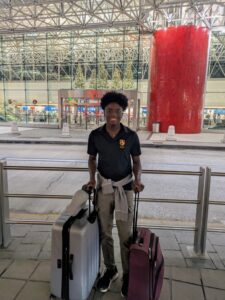 I have been very excited about getting ready to travel to Stellenbosch, South Africa! I am interested in learning more about a different culture for the winter term, especially through its photography. At Stellenbosh University, the oldest university in South Africa, they primarily speak English and Afrikaans, even though the country has over 12 official languages. I am interested in learning more Afrikaans and over the past week I have been researching greeting terms in Afrikaans, such as “Goeie dag,” which means Hello and How are you. I am a little anxious to study abroad in this new place, but I am also excited to be abroad to travel and experience education in a different country.
I have been very excited about getting ready to travel to Stellenbosch, South Africa! I am interested in learning more about a different culture for the winter term, especially through its photography. At Stellenbosh University, the oldest university in South Africa, they primarily speak English and Afrikaans, even though the country has over 12 official languages. I am interested in learning more Afrikaans and over the past week I have been researching greeting terms in Afrikaans, such as “Goeie dag,” which means Hello and How are you. I am a little anxious to study abroad in this new place, but I am also excited to be abroad to travel and experience education in a different country.
Research and planning have relieved some of the anxiety surrounding Traveling. Before departure, I researched Stellenbosch’s climate and food to ensure that I packed correctly and knew where to try new foods. Further, I have reviewed my accommodation details, passports, and acceptance letters, and obtained some of the local currency, Rand, from my bank in case of emergencies. As I am taking a photography course in South Africa, I took time to clean my camera and learn more about the places that we are visiting. I am now most excited to visit the Addo National Park and learn more about South African Customs. I am excited to share some amazing photographs with you all from South Africa, so please Stay tuned for my updates!
January 8th:
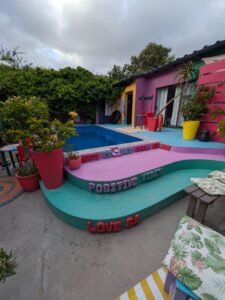 It has been an amazing experience being in Stellenbosch, South Africa. Over the past few days, I have been in class learning and experiencing a lecturing style that is quite different from what I am used to. The professor primarily writes on the board and does not use PowerPoint slides. Most of the lecture is hands-on, allowing us to practice using our cameras by taking pictures of random objects or people in the classroom. Today, we had an exam, and the grading system here is very different. Exams grades are given in terms of “marks” instead of points, with an A being an 80% rather than a 90%. The exams are also more challenging, as they consist of free-response questions, rather than multiple-choice questions like I am used to in my STEM courses at UMBC. After the exam, we went to Bo-Kaap, South Africa, for a practical photography exam, where we had the chance to practice using color and angles. This hands-on approach has been one of my favorite parts of the course, as it allows us to apply what we’ve learned in class directly to real-world situations.
It has been an amazing experience being in Stellenbosch, South Africa. Over the past few days, I have been in class learning and experiencing a lecturing style that is quite different from what I am used to. The professor primarily writes on the board and does not use PowerPoint slides. Most of the lecture is hands-on, allowing us to practice using our cameras by taking pictures of random objects or people in the classroom. Today, we had an exam, and the grading system here is very different. Exams grades are given in terms of “marks” instead of points, with an A being an 80% rather than a 90%. The exams are also more challenging, as they consist of free-response questions, rather than multiple-choice questions like I am used to in my STEM courses at UMBC. After the exam, we went to Bo-Kaap, South Africa, for a practical photography exam, where we had the chance to practice using color and angles. This hands-on approach has been one of my favorite parts of the course, as it allows us to apply what we’ve learned in class directly to real-world situations.
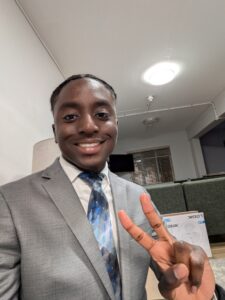 Yesterday, January 7th, was an interesting day for me because I had a medical school interview. This was a bit challenging given that South Africa is 7 hours ahead of the United States, so my interview took place from 3 pm to 11 pm GMT. Before coming to South Africa, this was one of my biggest concerns, but the experience turned out to be very smooth. My professors allowed me to leave class early for the interview, and the interviewers were very understanding of the time difference. For anyone applying to professional schools or jobs during the winter term, don’t be discouraged from participating in study abroad programs. I’ve learned that with good communication between you and the respective parties, everything can be managed effectively.
Yesterday, January 7th, was an interesting day for me because I had a medical school interview. This was a bit challenging given that South Africa is 7 hours ahead of the United States, so my interview took place from 3 pm to 11 pm GMT. Before coming to South Africa, this was one of my biggest concerns, but the experience turned out to be very smooth. My professors allowed me to leave class early for the interview, and the interviewers were very understanding of the time difference. For anyone applying to professional schools or jobs during the winter term, don’t be discouraged from participating in study abroad programs. I’ve learned that with good communication between you and the respective parties, everything can be managed effectively.
January 15th:
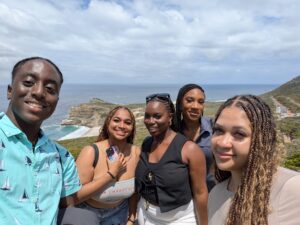 It’s been an incredible experience being in Stellenbosch, South Africa. On January 10th, we left Stellenbosch University for a several-day trip along the Garden Route, which stretches from the western to the eastern Cape of South Africa, passing through many old towns, nature reserves, and national parks. During this journey, we stayed at various hostels and had the opportunity to practice our photography skills along the way. We learned to adjust settings like flash and exposure to account for different lighting, and we explored the importance of aperture, shutter speed, and ISO to ensure the highest quality images.
It’s been an incredible experience being in Stellenbosch, South Africa. On January 10th, we left Stellenbosch University for a several-day trip along the Garden Route, which stretches from the western to the eastern Cape of South Africa, passing through many old towns, nature reserves, and national parks. During this journey, we stayed at various hostels and had the opportunity to practice our photography skills along the way. We learned to adjust settings like flash and exposure to account for different lighting, and we explored the importance of aperture, shutter speed, and ISO to ensure the highest quality images.
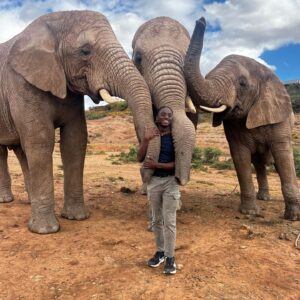 So far, we’ve seen incredible wildlife, including elephants, ostriches, and antelope species like Kudu and Impalas. I even had the chance to try traditional South African food, like Boerewors, and I was adventurous enough to try ostrich meat. One of the most memorable experiences was getting a hug from three rescued elephants—Jabari, Malaika, and Bulelo—who were saved from poachers at birth. I also had the thrill of participating in the world’s tallest bungee jump, an experience that pushed me to step out of my comfort zone.
So far, we’ve seen incredible wildlife, including elephants, ostriches, and antelope species like Kudu and Impalas. I even had the chance to try traditional South African food, like Boerewors, and I was adventurous enough to try ostrich meat. One of the most memorable experiences was getting a hug from three rescued elephants—Jabari, Malaika, and Bulelo—who were saved from poachers at birth. I also had the thrill of participating in the world’s tallest bungee jump, an experience that pushed me to step out of my comfort zone.
Staying at hostels has also been a great way to meet locals, including students, and learn about their experiences in South Africa. I’ve gained insight into the country’s progress and challenges, which has been eye-opening. This trip has been life-changing, exposing me to a culture and way of life that is slightly different from what I’m used to.
Final Thoughts: January 18th
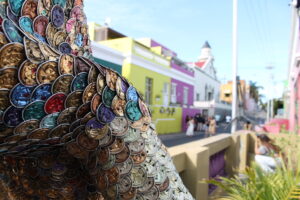 As I prepare to leave South Africa, I reflect on how life-changing this experience has been. I’ve met people from all over South Africa, as well as individuals from the Ivory Coast, and have learned about their ways of life. Through our conversations, I gained a better understanding of the healthcare and education systems in these countries and how they compare to the US system.
As I prepare to leave South Africa, I reflect on how life-changing this experience has been. I’ve met people from all over South Africa, as well as individuals from the Ivory Coast, and have learned about their ways of life. Through our conversations, I gained a better understanding of the healthcare and education systems in these countries and how they compare to the US system.
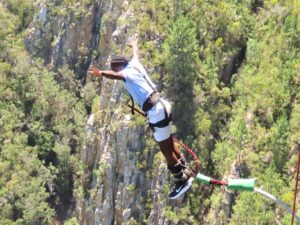
Beyond the cultural exposure, this trip has significantly impacted my passion for photography. I’ve developed a deeper interest in nature and people photography, and my professors taught me invaluable skills to capture clear images in diverse environments. I plan to use these photography skills in both my personal and professional life moving forward. Through this course, I’ve not only learned more about how to use a camera but also gained a greater understanding of myself.
